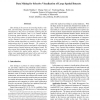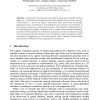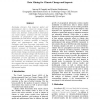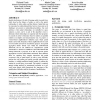699 search results - page 8 / 140 » Detection of Spatial Changes using Spatial Data Mining |
ICTAI
2002
IEEE
14 years 20 days ago
2002
IEEE
Data mining is the process of extracting implicit, valuable, and interesting information from large sets of data. Visualization is the process of visually exploring data for patte...
PKDD
2004
Springer
14 years 1 months ago
2004
Springer
In this paper we propose a novel spatial associative classifier method based on a multi-relational approach that takes spatial relations into account. Classification is driven by s...
MOBIHOC
2008
ACM
14 years 7 months ago
2008
ACM
In order to better understand human and animal mobility and its potential effects on Mobile Ad-Hoc networks and Delay-Tolerant Networks, many researchers have conducted experiment...
ICDM
2008
IEEE
14 years 2 months ago
2008
IEEE
Knowledge discovery from temporal, spatial and spatiotemporal data is critical for climate change science and climate impacts. Climate statistics is a mature area. However, recent...
KDD
2009
ACM
14 years 8 months ago
2009
ACM
Spatial classification is the task of learning models to predict class labels based on the features of entities as well as the spatial relationships to other entities and their fe...




